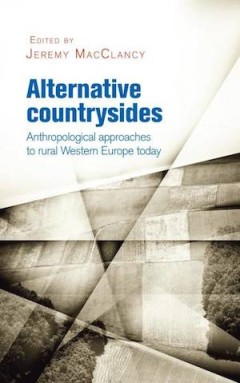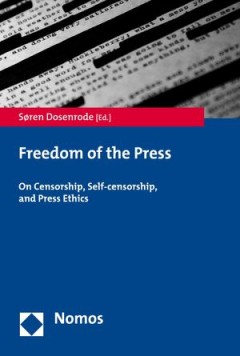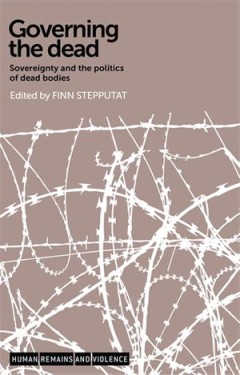Filter by

Managing Archaeological Landscapes in Northumberland Till Tweed Studies Volu…
The Till-Tweed river catchment areas in Northumberland contain outstanding archaeological and palaeoenvironmental remains which have been in general only poorly understood. This study has assembled detailed data that will provide a platform for future landscape-based research and site-based investigation. Written from a landscape, or geoarchaeological perspective, this study develops a methodol…
- Edition
- -
- ISBN/ISSN
- -
- Collation
- -
- Series Title
- -
- Call Number
- -

Life and Economy at Early Medieval Flixborough, c. AD 600-1000 The Artefact …
Between 1989 and 1991, excavations in the parish of Flixborough, North Lincolnshire, unearthed remains of an Anglo-Saxon settlement associated with one of the largest collections of artefacts and animal bones yet found on such a site. In an unprecedented occupation sequence from an Anglo-Saxon rural settlement, six main periods of occupation have been identified, dating from the seventh to the …
- Edition
- -
- ISBN/ISSN
- 9781842173107
- Collation
- -
- Series Title
- -
- Call Number
- -

Late Quaternary Landscape Evolution of the Swale-Ure Washlands, North Yorkshire
Reporting on a multi-disciplinary project this book seeks to reconstruct the history since the last glaciation of the area between and including the middle reaches of the Rivers Swale and Ure in Yorkshire. Included in this history are both natural changes, determined from studies of landforms and sediments, and human-induced changes, recorded in archaeological and geo-archaeological records. Th…
- Edition
- -
- ISBN/ISSN
- 9781842176146
- Collation
- -
- Series Title
- -
- Call Number
- -

Creating Learning Spaces Experiences from Educational Fields
What can we learn from a teacher's journal about working with challenging youth? Why does the Training Room Program in German schools impede the development of an empowering learning culture? What experiences transpire during a train trip to the sea with an unruly crew of school boys? Or: what happens when children plan a trip on their own? Anyone who has accumulated experiences in teaching fac…
- Edition
- -
- ISBN/ISSN
- 9783837648874, 9783839448878
- Collation
- -
- Series Title
- -
- Call Number
- -

Re/Assembling the Pregnant and Parenting Teenager Narratives from the Fiel
Drawing in contributions from the United States, the United Kingdom and Republic of Ireland and Aotearoa New Zealand, this book seeks to foreground shifting experiences of teenage pregnancy and parenting in time and space. In the process, the work cuts across enduring ‘stigma' contests and dominant discourses which seek to capture, understand and render fixable the ‘problem' of teen…
- Edition
- -
- ISBN/ISSN
- 9781787075139
- Collation
- -
- Series Title
- -
- Call Number
- -

From Media Hype to Twitter Storm News Explosions and Their Impact on Issues,…
The word media hype is often used as rhetorical argument to dismiss waves of media attention as overblown, disproportional and exaggerated. But these explosive news waves, as well as - nowadays - the twitter storms, are object of scientific research, because they are an important phenomenon in the public area. Sometimes it is indeed 'much ado about nothing' but in many cases these media storms …
- Edition
- -
- ISBN/ISSN
- -
- Collation
- -
- Series Title
- -
- Call Number
- -

Cyber Public Sphere and Social Movements Calling to Cyber Spaces
The diversification and politicisation of the mass media within itself and also societal pressure created by the mass media at a social level have caused changes to our social structure. The first change began with the contextual changes to the mass media, and this change led to visible changes in societies. That transformation has almost erased the distinction between the private and the publi…
- Edition
- -
- ISBN/ISSN
- 9783848749133
- Collation
- -
- Series Title
- -
- Call Number
- -

Alternative countrysides Anthropological approaches to rural Western Europe …
A fresh anthropological look at a central but neglected topic: the profound changes in rural life throughout Western Europe today. As locals leave for jobs in cities they are replaced by neo-hippies, lifestyle-seekers, eco-activists, and labour migrants from beyond the EU. With detailed ethnographic examples, contributors analyse new modes of living rurally and emerging forms of social organisa…
- Edition
- -
- ISBN/ISSN
- 9780719096846
- Collation
- -
- Series Title
- -
- Call Number
- -

Freedom of the Press On Censorship, Self-censorship, and Press Ethics
Since antiquity it has been known that without the freedom to speak, and later to publish, the road to fanaticism and totalitarianism lies wide open. This book focuses on how the 'press' reacted, when press freedom was under strain in number of cases in the 20th century and the beginning of the 21st century. Contemporary literature on the freedom of the press has its focus on the role of the pr…
- Edition
- -
- ISBN/ISSN
- 9783832951849
- Collation
- -
- Series Title
- -
- Call Number
- -

Governing the dead Sovereignty and the politics of dead bodies
This book looks at sovereignty as a particular form of power and politics. It shows that the fate of bodies in the transition from life to death can provide a key to understanding fundamental ways in which sovereignty is claimed and performed. The contributions analyse (post-)conflict as well as non-conflict contexts, which too often are studied in isolation from one another. Focusing on contem…
- Edition
- -
- ISBN/ISSN
- 9780719096082
- Collation
- -
- Series Title
- -
- Call Number
- -
 Computer Science, Information & General Works
Computer Science, Information & General Works  Philosophy & Psychology
Philosophy & Psychology  Religion
Religion  Social Sciences
Social Sciences  Language
Language  Pure Science
Pure Science  Applied Sciences
Applied Sciences  Art & Recreation
Art & Recreation  Literature
Literature  History & Geography
History & Geography